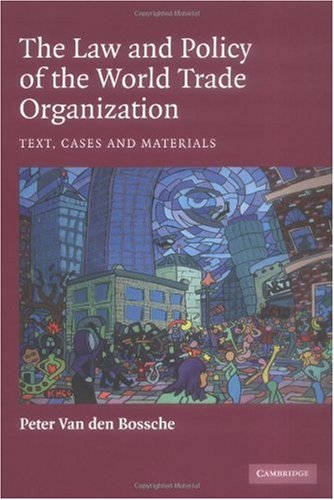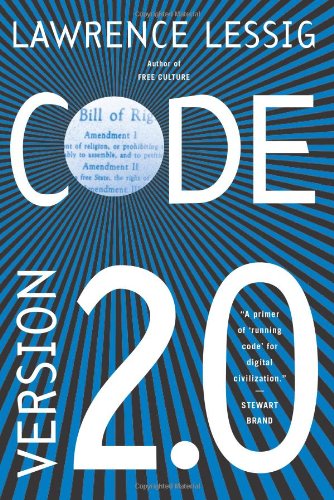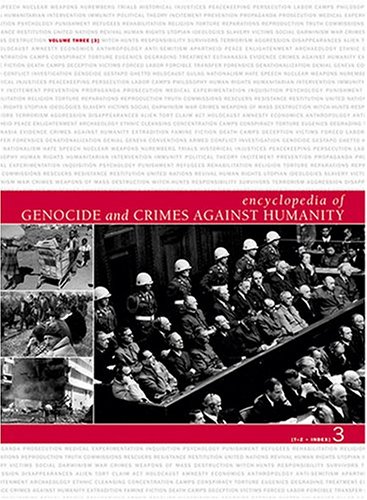Peter Van den Bossche0521822904, 9780521822909
Table of contents :
Cover……Page 1
Half-title……Page 3
Title……Page 5
Copyright……Page 6
Contents……Page 7
Figures……Page 12
Tables……Page 14
Preface and acknowledgments……Page 15
Table of cases……Page 18
Table of aggreements and decisions……Page 29
1.1. Introduction……Page 41
1.2.1.1. The concept of ‘economic globalisation’……Page 43
1.2.1.2. Forces driving economic globalisation……Page 44
1.2.1.3. Facts and figures on world trade and investment……Page 47
1.2.2.1. Backlash against economic globalisation……Page 51
1.2.2.2. Problems of current economic globalisation……Page 54
1.2.3.1. The case for international trade and trade liberalisation……Page 59
1.2.3.2. Reasons and excuses for protectionist trade policies……Page 64
1.2.4. Globalisation and trade to the benefit of all?……Page 69
1.3.1.1. Need for international rules……Page 75
1.3.1.2. International economic law and WTO law……Page 78
1.3.2. Basic rules and principles of WTO law……Page 79
1.3.2.1. Principles of non-discrimination……Page 80
1.3.2.2. Rules on market access……Page 81
1.3.2.3. Rules on unfair trade……Page 82
1.3.2.5. Special and differential treatment for developing-country Members……Page 83
1.4. Sources of WTO law……Page 84
1.4.1. The Marrakesh Agreement Establishing the World Trade Organization……Page 85
1.4.1.1. General Agreement on Tariffs and Trade 1994……Page 86
1.4.1.2. Other multilateral agreements on trade in goods……Page 88
1.4.1.3. General Agreement on Trade in Services……Page 90
1.4.1.4. Agreement on Trade-Related Aspects of Intellectual Property Rights……Page 91
1.4.1.5. Understanding on Rules and Procedures for the Settlement of Disputes……Page 92
1.4.1.7. Plurilateral agreements……Page 93
1.4.1.8. Ministerial Decisions and Declarations……Page 94
1.4.2.1. WTO dispute settlement reports……Page 95
1.4.2.2. Acts of WTO bodies and agreements concluded in the context of the WTO……Page 96
1.4.2.3. Customary international law……Page 97
1.4.2.5. Other international agreements……Page 98
1.4.2.6. Subsequent practice of WTO Members……Page 99
1.5.1.1. WTO law as an integral part of international law……Page 100
1.5.1.2. Conflicts between WTO agreements and other agreements……Page 103
1.5.2.1. National law in WTO law……Page 105
1.5.2.2. WTO law in national law……Page 107
1.6. Summary……Page 112
1.7. Exercise: Globaphiles versus globaphobes……Page 114
2 The World Trade Organization……Page 116
2.1. Introduction……Page 117
2.2.1. The GATT 1947 and the International Trade Organization……Page 118
2.2.1.2. The GATT as a de facto international organisation for trade……Page 121
2.2.2.2. egotiations on a new international organisation for trade……Page 123
2.3.1. Objectives of the WTO……Page 126
2.3.2. Functions of the WTO……Page 128
2.3.2.1. Implementation of the WTO agreements……Page 129
2.3.2.2. Negotiation of new agreements……Page 130
2.3.2.4. Trade policy review……Page 134
2.3.2.5. Cooperation with other organisations……Page 137
2.3.2.6. Technical assistance to developing countries……Page 140
2.4.1. Current membership……Page 143
2.4.1.2. The European Communities……Page 145
2.4.1.3. Developing-country Members……Page 146
2.4.1.4. Groups and alliances within the WTO……Page 147
2.4.1.5. Observers……Page 148
2.4.2.1. The accession process……Page 149
2.4.2.2. Past and future accessions……Page 152
2.4.3.1. Waiver of WTO obligations……Page 155
2.4.3.2. ‘Non-application’ clause……Page 158
2.5. Institutional structure of the WTO……Page 159
2.5.1. Basic structure……Page 160
2.5.2. Ministerial Conference……Page 162
2.5.3.1. General Council……Page 164
2.5.3.2. DSB and TPRB……Page 166
2.5.4.1. Specialised councils……Page 167
2.5.4.2. Committees and working parties……Page 168
2.5.5. Trade Negotiations Committee……Page 170
2.5.6.1. A WTO executive body?……Page 171
2.5.6.2. WTO consultative bodies……Page 172
2.5.7. Quasi-judicial and other non-political bodies……Page 173
2.5.8.1. Appointment of the Director-General……Page 175
2.5.8.2. Role of the Director-General and the WTO Secretariat……Page 177
2.5.8.3. The structure and composition of the WTO Secretariat……Page 179
2.6.1.1. Decision-making by consensus……Page 181
2.6.1.2. Decision-making by majority voting……Page 182
2.6.2.2. Authoritative interpretations……Page 184
2.6.2.4. Waivers……Page 185
2.6.2.5. Amendments……Page 186
2.6.2.6. Annual budget and financial regulations……Page 187
2.6.3.1. Decision-making by consensus versus voting……Page 188
2.6.3.2. The process of WTO decision-making in practice……Page 189
2.6.4.1. Marginalisation of developing-country Members……Page 191
2.6.4.2. The ‘internal transparency’ debate……Page 192
2.6.5.1. Requirements of democratic decision-making……Page 194
2.6.5.2. Article V:2 of the WTO Agreement……Page 195
2.6.5.3. Arguments for and against greater NGO involvement……Page 196
2.6.5.4. The 1996 Guidelines of the General Council……Page 197
2.6.5.5. The ‘external transparency’ debate after the Seattle debacle……Page 199
2.6.6. Form and legal basis of WTO decisions……Page 202
2.7.2. The WTO budget……Page 204
2.8. Summary……Page 206
2.9. Exercise: To join or not to join?……Page 210
3 WTO dispute settlement……Page 212
Introduction……Page 213
3.2. The origins of the WTO dispute settlement system……Page 214
3.2.1. Settlement of disputes between States……Page 215
3.2.2. Dispute settlement under the GATT 1947……Page 216
3.2.3. Uruguay Round negotiations and the Dispute Settlement Understanding……Page 220
3.3.1. Object and purpose of the WTO dispute settlement system……Page 222
3.3.1.2. Settlement of disputes through consultations if possible……Page 223
3.3.1.3. Settlement of disputes and the clarification of WTO law……Page 224
3.3.1.4. Settlement of disputes in good faith……Page 225
3.3.2. Methods of WTO dispute settlement……Page 226
3.3.3. Jurisdiction of the WTO dispute settlement system……Page 227
3.3.3.1. One integrated system for all WTO disputes……Page 228
3.3.3.3. Exclusive jurisdiction……Page 229
3.3.4. Access to the WTO dispute settlement system……Page 230
3.3.4.1. Causes of action……Page 231
3.3.4.2. Challenges to legislation and/or its application……Page 234
3.3.4.3. The amicus curiae brief issue……Page 236
3.3.4.4. ‘Indirect access’ for non-Members……Page 242
3.3.5.1. Steps in the WTO dispute settlement process……Page 243
3.3.5.2. Timeframe for the WTO dispute settlement process……Page 244
3.3.6.1. Rules of interpretation……Page 246
3.3.6.2. Burden of proof……Page 250
3.3.7. Confidentiality and Rules of Conduct……Page 252
3.3.7.1. Confidentiality of the proceedings……Page 253
3.3.7.2. Rules of Conduct……Page 255
3.3.8.1. Withdrawal of the WTO-inconsistent measure……Page 257
3.3.8.2. Compensation and retaliation……Page 260
3.3.8.3. Other remedies for breach of WTO law……Page 263
3.3.9. Special rules and assistance for developing-country Members……Page 265
3.3.9.1. Special rules for developing-country Members……Page 266
3.3.9.2. Legal assistance for developing-country Members……Page 267
3.4.1. The Dispute Settlement Body……Page 268
3.4.2.1. Request for the establishment of a panel……Page 271
3.4.2.2. Establishment of a panel……Page 273
3.4.2.3. Composition of a panel……Page 275
3.4.2.4. Terms of reference of a panel……Page 277
3.4.2.5. Standard of review for panels……Page 278
3.4.2.6. Judicial economy and acts ultra petita……Page 280
3.4.2.7. Characteristics of a panel report……Page 282
3.4.2.8. Role of the WTO Secretariat……Page 283
3.4.3.1. Membership of the Appellate Body……Page 284
3.4.3.2. Institutional structure of the Appellate Body……Page 287
3.4.3.3. Access to appellate review……Page 289
3.4.3.4. Scope of appellate review……Page 290
3.4.3.5. The mandate of the Appellate Body……Page 292
3.5.1. Consultations……Page 295
3.5.1.1. Initiation of consultations……Page 296
3.5.1.2. Conduct of consultations……Page 297
3.5.1.3. Outcome of consultations……Page 298
3.5.2. Panel proceedings……Page 299
3.5.2.1. Working procedures for panel proceedings……Page 300
3.5.2.2. Written submissions and substantive panel meetings……Page 301
3.5.2.3. Rights of third parties……Page 303
3.5.2.4. Submission and admission of evidence……Page 304
3.5.2.5. Use of experts……Page 305
3.5.2.6. Protection of confidential business information……Page 307
3.5.2.7. Panel deliberations and interim review……Page 308
3.5.2.9. Duration of panel proceedings……Page 309
3.5.3.1. Working procedures for appellate review……Page 310
3.5.3.3. Written submissions and the oral hearing……Page 313
3.5.3.4. Rights of third participants……Page 315
3.5.3.5. Exchange of views, deliberations and the adoption of the report……Page 316
3.5.3.6. Duration of appellate review proceedings……Page 317
3.5.4.1. Arbitration on the ‘reasonable period of time for implementation’……Page 318
3.5.4.2. Surveillance of implementation by the DSB……Page 319
3.5.4.3. The ‘sequencing’ issue……Page 320
3.5.4.4. Disagreement on the implementation……Page 321
3.5.4.5. Arbitration on and authorisation of suspension of concessions or other obligations……Page 323
3.6.1.2. Complainants and respondents……Page 324
3.6.1.3. WTO agreements at issue in disputes……Page 326
3.6.2. Reports and awards……Page 327
3.7.1.1. The DSU review and beyond……Page 329
3.7.1.2. The Doha Development Round and DSU negotiations……Page 330
3.7.2. Proposals for DSU reform……Page 332
3.7.2.1. Key proposals with respect to the institutions of WTO dispute settlement……Page 333
3.7.2.2. Key proposals with respect to the proceedings of WTO dispute settlement……Page 334
3.7.2.3. Key proposals with respect to systemic issues……Page 336
3.7.3. Main challenge to the WTO dispute settlement system……Page 338
3.8. Summary……Page 339
3.9. Exercise: Newland seeks justice……Page 344
4 Principles of non-discrimination……Page 347
4.1. Introduction……Page 348
4.2. Most-favoured-nation treatment under the GATT 1994……Page 349
4.2.1. Nature of the MFN treatment obligation of Article I:1 of the GATT 1994……Page 350
4.2.2.1. ‘Any advantage with respect to …’……Page 352
4.2.2.2. ‘Like products’……Page 354
4.2.2.3. Advantage granted ‘immediately and unconditionally’……Page 357
4.3.1. Nature of the MFN treatment obligation of Article II:1 of the GATS……Page 358
4.3.2.1. ‘Measures covered by this Agreement’……Page 360
4.3.2.2. ‘Like services or service suppliers’……Page 363
4.3.2.3. Treatment no less favourable……Page 364
4.3.3. Exemptions from the MFN treatment obligation under Article II:1 of the GATS……Page 365
4.4. National treatment under the GATT 1994……Page 366
4.4.1.1. The object and purpose of Article III……Page 367
4.4.1.2. Internal measures versus border measures……Page 369
4.4.1.3. Articles III:1, III:2 and III:4……Page 370
4.4.2. Consistency with Article III:2, first sentence, of the GATT 1994……Page 371
4.4.2.1. ‘Internal tax …’……Page 372
4.4.2.2. ‘Like products’……Page 374
4.4.2.3. Taxes ‘in excess of’……Page 378
4.4.3. Consistency with Article III:2, second sentence, of the GATT 1994……Page 380
4.4.3.2. ‘Directly competitive or substitutable products’……Page 382
4.4.3.3. ‘Not similarly taxed’……Page 386
4.4.3.4. ‘So as to afford protection to domestic production’……Page 387
4.4.4. Consistency with the national treatment obligation of Article III:4 of the GATT 1994……Page 389
4.4.4.1. ‘Laws, regulations and requirements …’……Page 390
4.4.4.2. ‘Like products’……Page 394
4.4.4.3. ‘Treatment no less favourable’……Page 401
4.5.1. Nature of the national treatment obligation of Article XVII of the GATS……Page 405
4.5.2.1. ‘Measures affecting trade in services’……Page 407
4.5.2.3. ‘Treatment no less favourable’……Page 408
4.6. Summary……Page 409
4.7. Exercise: Beer in Newland……Page 412
5 Rules on market access……Page 415
5.1. Introduction……Page 416
5.2.1.1. Definition and types……Page 417
5.2.1.3. National tariff……Page 419
5.2.2.2. A call for tariff negotiations……Page 429
5.2.2.4. Customs duties remain important trade barriers……Page 430
5.2.2.5. Basic principles and rules governing tariff negotiations……Page 433
5.2.2.6. Organisation of tariff negotiations……Page 435
5.2.3.1. Tariff concessions or tariff bindings……Page 438
5.2.3.2. Schedules of Concessions……Page 439
5.2.3.3. Interpretation of tariff schedules and concessions……Page 440
5.2.4. Protection of tariff concessions……Page 459
5.2.4.1. Articles II:1(a) and II:1(b), first sentence, of the GATT 1994……Page 460
5.2.4.2. Tariff concessions and customs duties actually applied……Page 461
5.2.5. Modification or withdrawal of tariff concessions……Page 463
5.2.6.1. Customs classification……Page 465
5.2.6.2. Valuation for customs purposes……Page 469
5.2.6.3. Determination of origin……Page 472
5.2.7.1. Definition and types……Page 476
5.2.7.2. Rules regarding ‘other duties or charges’……Page 477
5.2.7.3. Exceptions to the rule……Page 478
5.3.1.1. Definition and types……Page 481
5.3.1.2. Customs duties versus quantitative restrictions……Page 482
5.3.1.3. Tariff quotas……Page 483
5.3.2.1. General prohibition on quantitative restrictions……Page 484
5.3.2.2. Rules on quantitative restrictions on specific products……Page 486
5.3.2.3. Voluntary export restraints……Page 489
5.3.3.1. Rule of non-discrimination……Page 490
5.3.3.2. Rules on the distribution of trade……Page 491
5.3.3.3. Examples of the allocation of quotas and tariff quotas……Page 493
5.3.3.4. Import-licensing procedures……Page 495
5.3.4. Other non-tariff barriers……Page 497
5.3.4.1. Technical regulations, standards and conformity assessment procedures……Page 498
5.3.4.2. Sanitary and phytosanitary measures……Page 502
5.3.4.3. Lack of transparency……Page 507
5.3.4.4. Unfair and arbitrary application of trade measures……Page 511
5.3.4.5. Customs formalities and procedures……Page 514
5.3.4.6. Other measures or actions……Page 516
5.4. Barriers to trade in services……Page 520
5.4.1.1. Definition and types of market access barriers……Page 522
5.4.1.2. Negotiations on market access……Page 524
5.4.1.3. Schedules of Specific Commitments……Page 527
5.4.1.4. Modification or withdrawal of commitments……Page 533
5.4.1.5. Market access commitments agreed to thus far……Page 534
5.4.2. Other barriers to trade in services……Page 535
5.4.2.1. Lack of transparency……Page 536
5.4.2.3. Domestic regulation……Page 537
5.4.2.4. Lack of recognition of foreign diplomas and professional certificates……Page 538
5.4.2.5. Other measures and actions……Page 539
5.5. Summary……Page 542
5.6. Exercise: Carlie® goes to Europe……Page 550
6.1. Introduction……Page 552
6.2. Dumping and anti-dumping measures……Page 553
6.2.1.1. History of the law on dumping……Page 554
6.2.1.3. WTO treatment of dumping……Page 556
6.2.1.4. Response to injurious dumping……Page 557
6.2.2. Determination of dumping……Page 558
6.2.2.1. Determination of the ‘normal value’……Page 559
6.2.2.2. Alternative rules for the determination of the ‘normal value’……Page 561
6.2.2.3. Determination of the ‘export price’……Page 562
6.2.2.4. Comparison between the export price and the ‘normal value’……Page 563
6.2.2.5. Calculation of the margin of dumping……Page 564
6.2.3.1. Concept of ‘domestic industry’……Page 566
6.2.3.2. Determination of injury……Page 568
6.2.3.3. Determination of a threat of material injury……Page 571
6.2.4. Demonstration of a causal link……Page 573
6.2.4.2. ‘Non-attribution’ requirement……Page 574
6.2.4.3. Cumulation……Page 575
6.2.5.1. Initiation of an investigation……Page 576
6.2.5.2. Period of investigation……Page 578
6.2.5.3. Conduct of the investigation……Page 579
6.2.6. Anti-dumping measures……Page 581
6.2.6.2. Price undertakings……Page 582
6.2.6.3. Imposition and collection of anti-dumping duties……Page 583
6.2.6.4. Duration, termination and review of anti-dumping measures……Page 585
6.2.6.6. Public notice and judicial review……Page 588
6.2.7. Special and differential treatment for developing-country Members……Page 589
6.3. Subsidies and countervailing measures……Page 591
6.3.1.1. The history of the law on subsidies and subsidised trade……Page 592
6.3.1.2. The concept of ‘subsidy’……Page 593
6.3.1.4. Response to injurious subsidised trade……Page 594
6.3.2.1. Financial contribution……Page 595
6.3.2.3. A financial contribution conferring a benefit……Page 597
6.3.2.4. Requirement of ‘specificity’ of the subsidy……Page 599
6.3.3. Prohibited subsidies……Page 601
6.3.3.1. Export subsidies……Page 602
6.3.3.2. Import substitution subsidies……Page 604
6.3.3.3. Multilateral remedies for prohibited subsidies……Page 605
6.3.4.1. Subsidies causing injury……Page 607
6.3.4.3. Subsidies causing serious prejudice……Page 612
6.3.4.4. Multilateral remedies for actionable subsidies……Page 613
6.3.5. Countervailing measures……Page 614
6.3.5.1. Conditions for the imposition of countervailing duties……Page 615
6.3.5.2. Conduct of countervailing investigations……Page 616
6.3.5.3. Application of countervailing measures……Page 619
6.3.5.4. Public notice and judicial review……Page 622
6.3.6. Agricultural subsidies……Page 623
6.3.6.1. Agricultural export subsidies……Page 624
6.3.6.2. Domestic agricultural support measures……Page 625
6.3.7. Special and differential treatment for developing-country Members……Page 626
6.4. Summary……Page 628
6.5. Exercise: Dirty play, but by whom?……Page 634
7 Trade liberalisation versus other societal values and interests……Page 636
7.1. Introduction……Page 637
7.2. General exceptions under the GATT 1994……Page 638
7.2.1. The nature and function of Article XX of the GATT 1994……Page 639
7.2.2. The two-tier test under Article XX of the GATT 1994……Page 641
7.2.3. Specific exceptions under Article XX of the GATT 1994……Page 642
7.2.3.1. Article XX(b): ‘measures necessary to protect human, animal or plant life or health’……Page 643
7.2.3.2. Article XX(d): “measures necessary to secure compliance with …”……Page 648
7.2.3.3. Article XX(g): ‘measures relating to the conservation of exhaustible natural resources …’……Page 650
7.2.4. The chapeau of Article XX of the GATT 1994……Page 655
7.2.4.1. Object and purpose of the chapeau of Article XX……Page 656
7.2.4.2. ‘Arbitrary or unjustifiable discrimination between countries where the same conditions prevail’……Page 658
7.2.4.3. ‘Disguised restriction on international trade’……Page 662
7.2.5. Scope for Members to protect other societal values……Page 663
7.3. General exceptions under the GATS……Page 664
7.3.1. Specific exceptions under Article XIV of the GATS……Page 665
7.3.2. The chapeau of Article XIV of the GATS……Page 667
7.4.1. Article XXI of the GATT 1994……Page 668
7.4.1.1. Article XXI(a) and (b) of the GATT 1994: national security……Page 669
7.4.1.2. Article XXI(c) of the GATT 1994: international peace and security……Page 671
7.4.2. Article XIV bis of the GATS……Page 672
7.5. Economic emergency exceptions……Page 673
7.5.1. Article XIX of the GATT 1994 and the Agreement on Safeguards……Page 675
7.5.2. Characteristics of safeguard measures……Page 676
7.5.2.1. Duration of safeguard measures……Page 677
7.5.2.2. Non-discriminatory application of safeguard measures……Page 678
7.5.2.3. Safeguard measures in the form of quantitative restrictions……Page 679
7.5.2.5. Provisional safeguard measures……Page 680
7.5.3. Requirements for the use of safeguard measures……Page 681
7.5.3.1. ‘Increased imports’ requirement……Page 682
7.5.3.2. ‘Serious injury’ requirement……Page 685
7.5.3.3. ‘Causation’ requirement……Page 688
7.5.4. Domestic procedures……Page 689
7.6. Regional integration exceptions……Page 690
7.6.1. Article XXIV of the GATT 1994……Page 692
7.6.1.1. Customs unions……Page 693
7.6.1.2. Free trade areas……Page 698
7.6.1.4. Regional trade agreements and developing country Members……Page 700
7.6.1.5. Procedural issues……Page 701
7.6.2. Article V of the GATS……Page 702
7.6.2.1. ‘Substantial sectoral coverage’ requirement……Page 703
7.6.2.2. ‘Substantially all discrimination’ requirement……Page 704
7.6.2.4. Economic integration agreements and developing-country Members……Page 705
7.6.2.6. Labour markets integration agreement……Page 706
7.7.1. Articles XII and XVIII:B of the GATT 1994……Page 707
7.7.1.1. Nature of BoP measures……Page 708
7.7.1.2. Requirements for the use of BoP measures……Page 709
7.7.1.3. Procedural issues……Page 712
7.7.2. Article XII of the GATS……Page 714
7.8. Economic development exceptions……Page 716
7.8.1. Infant-industry-protection exception……Page 717
7.8.2.1. Preferential tariff treatment for developing countries under the Enabling Clause……Page 719
7.8.2.2. Additional preferential tariff treatment under the Enabling Clause……Page 720
7.9. Summary……Page 723
7.10. Exercise: Glass bottles and tetra-pack containers……Page 729
8.1. Introduction……Page 732
8.2. Integration of developing countries into the WTO system……Page 734
8.2.1. Problems in implementing current WTO agreements……Page 735
8.2.2. Special and differential treatment……Page 737
8.2.3. Trade-related technical assistance and capacity-building……Page 740
8.3. Extending the scope of WTO law……Page 742
8.3.1. The ‘Singapore issues’ and the Doha Ministerial Declaration……Page 743
8.3.2. Future negotiations on the Singapore issues?……Page 744
8.4. Conclusion……Page 746
Index……Page 747







Reviews
There are no reviews yet.